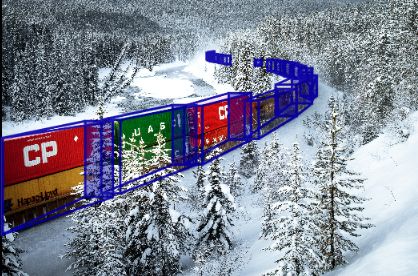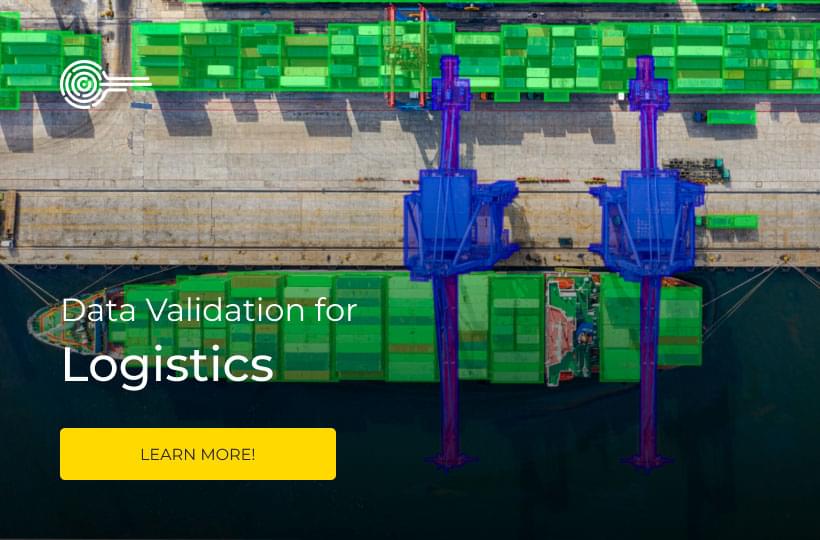Image and Video Annotation and Applications for AI in Logistics

The last couple of years since the start of the pandemic have been marked by global supply chain disruptions. The shipping and logistics industry can benefit from AI and automation in many ways. Efficiency is most important to these industries and related industries like warehouses.
AI can greatly increase efficiency in logistics. For example, AI can find the best shipping routes. AI can help guide ships in the same way that AI can safely drive delivery trucks. Finding the best, most efficient routes can improve delivery times. AI can do that with advanced analytics and by making accurate predictions. AI could improve decision-making based on the data.
Automation in ports and warehouses can also improve safety and efficiency. By improving safety and efficiency, more goods can be shipped and received. There have been obvious lessons to be learned from the pandemic. Also, there is much to be learned from the responses to that crisis and about how fragile supply lines are. Supply chain disruptions can be disastrous.
AI can help avoid such disruptions in the future. AI and automation can also improve safety and security. Reducing accidents and injuries to human labor is vital in this sector. In addition, AI can detect any malicious activities, such as smuggling contraband. Detecting any theft of valuable cargo is also important in managing risks.
In addition to finding the best routes and even piloting ships, AI can analyze data about the speed and power of the ship and conditions at sea. AI can predict changes in performance due to underwater fouling and other causes.
With enough historical data, it can predict trends and degradations in performance due to wear and tear on vessels. That can help improve maintenance scheduling and keep ships at sea longer.
AI can also improve costly fuel consumption and cargo load capacity utilization.
AI can provide predictive insights to improve vital decision-making in logistics. For example, dynamic route optimization based on new information and changing conditions. This can also help with last-mile delivery and improve the estimated arrival and delivery time.

Information could also be extracted. That information could then be used to provide answers to customers, perhaps through chatbots and automated voice systems or automated messages. AI can also use information like weather patterns and changes in seasonal demand like Christmas shopping.
AI can improve the capability to alert to any supply chain disruptions. Companies need the ability to react quickly to problems like congested or blocked shipping lanes. Any delays and other risks to shipping routes can cause real problems. AI can improve your ability to react to such problems and mitigate the risks.
In 2021, Ever Given had an accident that caused the Suez Canal, an important shipping route that caused delays. AI may improve the navigation of such a large ship through the narrow bends of the canal. Or it may have helped companies better react to the blocked route and reduced those costly delays.
As you can see, these potential AI products can provide solutions to major problems encountered in shipping and logistics. AI with improved machine learning can mimic humans' ability to process information. To do that, the AI needs to be trained using very large datasets. There are many image annotation use cases that enable that training for logistics.
Every step of the way in logistics provides opportunities to collect information from sources like pictures and videos. Shipping generates a lot of useful data that is good for creating many new and exciting AI-driven products.
Machine learning to create an AI requires all the data and information, like archives of videos and pictures, to be enhanced with metadata. Image annotation services and video annotation services provide that metadata.
AI trained with data annotation applications
Data annotation applications that are AI trained have great potential to use in the following areas:
● Advanced analytics
● Automated equipment
● Automated ships and delivery trucks
● Safety and security
● Trip planning and route optimization
● Performance forecasting for shipping vessels
● Shipment Tracking
● Logistics

Image and Video Annotation Power Machine Learning and AI
There is abundant available data and an opportunity to continue collecting more data in logistics. That means plenty of resources are needed to create new AI solutions to problems like supply chain disruptions.
Shipping and logistics demand efficiency, accuracy, and the best possible outcomes. Machine learning used to develop an AI is a garbage in-garbage out process. You don't want garbage data. You need a lot of the right data for your AI project dataset.
The image and video annotation required at scale also demands precision, accuracy, efficiency, and the best results to create the best AI possible. As with logistics, any mistakes or delays can be costly. Therefore, you need the best image and video annotation to create the best AI products and services that shipping and logistics demand.
Logistics is an area that is growing in importance. Shipping and trade can make or break the global economy. Free trade and enterprises depend on logistics. Governments and militaries also depend on logistics and supply lines. Moreover, reducing fuel consumption through optimization is vital for staving off catastrophic climate change.
Choosing the right video annotation services for computer vision is just as crucial for AI project. Automated equipment, ships that pilot themselves, autonomous delivery trucks, and drones all rely on computer vision. So too does anything that needs features like object recognition and tracking. The same is true if your AI needs to read numbers and text, like what is found on shipping labels and cargo manifests.
It is best to use trusted outsource data annotation services to avoid expensive problems and supply chain disruptions in your dataset.



